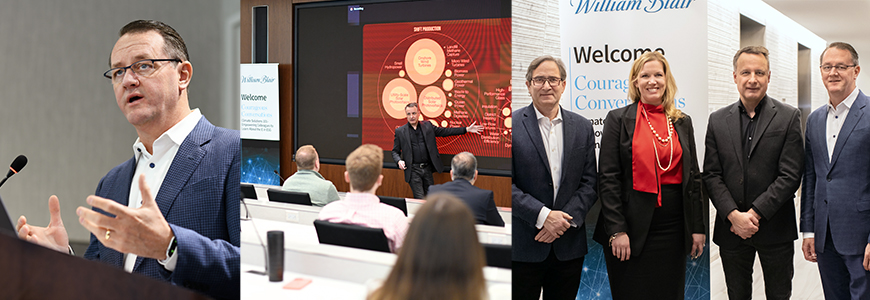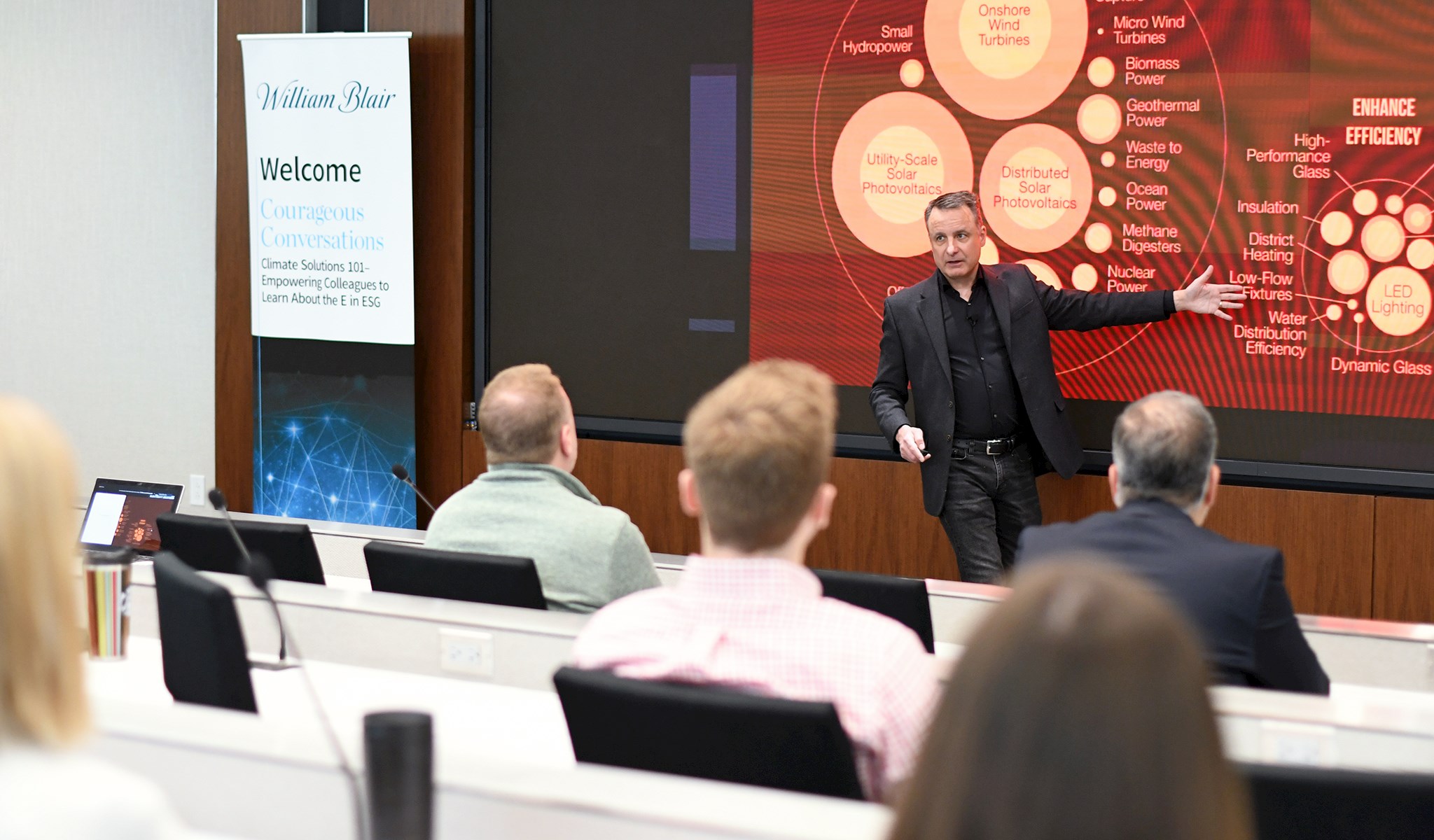William Blair kicked off its 2022 Courageous Conversations series on March 29 with an inspiring talk by world-renowned environmental scientist Dr. Jonathan Foley on new solutions to sustain the world’s climate, ecosystems, and natural resources.
Foley, who serves as executive director of Project Drawdown, recognized that the road ahead to fight climate change and reduce greenhouse gas emissions will take a collective effort by policy makers, investors, governments, communities, and individuals. But it can be done. The first step is moving past doomsday thinking.
“It turns out it’s not hopeless, we always have the opportunity to change the future,” Foley told a gathering of colleagues in Chicago and online. “We’re not limited by science, technology, economics—we’re limited by our will and the choices we make.
“We can actually build a better future for ourselves, for the next generations—by deploying capital, managing the risk of capital, but also seizing opportunity capital to make good in the world. That will be a major instrument for changing the world for the better.”
Empowering Colleagues Through Courageous Conversations
Courageous Conversations, sponsored by the William Blair Alliance Board and organized in 2018, is a series of talks for colleagues to expand their thinking and actions in nurturing a more inclusive culture. Foley’s message of hope inspired the audience to support and find solutions to help change the current course of climate change.
Among those solutions is analyzing investments using environmental, social, and governance criteria, or ESG investing, William Blair CEO Brent Gledhill said during the event. He charged William Blair colleagues to ask themselves: “What can we all do to make this planet the best it can be for the generations to come and contribute in the most positive way we can? What are we doing from an overall standpoint of how our activity plays across an ESG framework?”
Foley advises governments, foundations, non-government organizations, and business leaders around the world on sustaining the climate. He has published over 130 peer-reviewed scientific articles, with his works cited in Science, Nature, and the Proceedings of the National Academy of Sciences. Before joining Project Drawdown, a nonprofit with a mission to stop climate change, he led environmental programs at the University of Wisconsin and the University of Minnesota and was the executive director of the California Academy of Science.
Foley says the focus on fighting climate change is “bending the curve” on greenhouse gas emissions just like the world did with COVID. By bending the curve, the world could reach what Foley describes as “drawdown”—the point in time when the levels of gases stop climbing and start declining. In other words, it equates to net zero emissions: the amount of gases produced is being absorbed by the atmosphere.
“That’s the moment we stop climate change,” he said. “What we need to do is get there as quickly and safely and equitably as possible.”
That requires simultaneously bringing emissions to zero, protecting nature’s carbon sinks, and improving the health and education of society.

Creating a Better Future for All
Today, 25% of greenhouse gases globally comes from producing electricity—the largest source of gas emissions. So switching from burning coal and natural gas to collecting solar and wind power to generate electricity is just one of many solutions available now that can reduce CO2, he said.
Emissions from food production and agricultural land use follows at 24% of the world’s greenhouse gases.
“The biggest thing we can do to stop emissions in the food sectors is stopping deforestation,” said Foley.
Forests, like plants, soils, inland seas and lakes, the oceans, are nature’s reservoirs for absorbing up to 40% of the world’s emissions, Foley explained. These carbon sinks need to be protected.
The list of opportunities to bend the curve goes on and on—retrofitting buildings to be more energy efficient, new ways to produce cement that lowers gas emissions, alternative biofuels, revolutions in crop farming, novel water purifying systems, big investments in infrastructure, and more.
What Are We Waiting For?
“We’re going to be rebuilding the world,” Foley said. “I see that as an opportunity to do some really good work and deploy capital in smarter ways.
“Think of the world we could have. We could have a world with clean energy, with more free time, healthier and better cities, with a better food system, with improved equity, improved health for everyone. What are we waiting for?”



